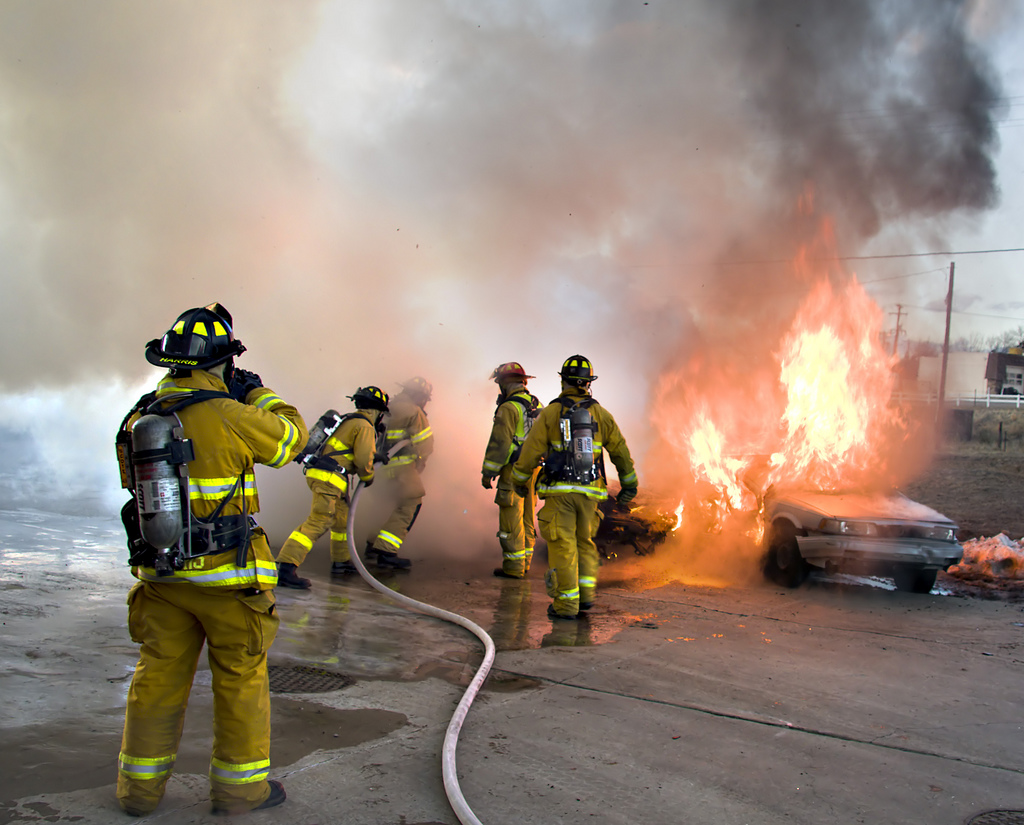
Fire departments are always working to find better and more efficient way to conduct business while providing the best service possible. What is a Fire Service Consortium? A fire consortium is another way departments have found to stay progressive, efficient in service delivery and stay well trained. I have work with and facilitated a fire training consortium and believe this is one of the most efficent ways to facilitate new fire recruit training.
What is a Fire Service Consortium? To understand this question we first need to know what a Consortium is. The Merriam-Webster definition: an agreement, combination, or group formed to undertake an enterprise beyond the resources of any one member.
A Fire Service consortium is a group made up of two or more Fire Departments or Fire Districts that work together to achieve a common objective. Departments that participate in a consortium pool resources to help meet the needs of all involved in the Consortium.
This pooling of resources is not only money, it can be training academies, training facilities, Firefighter recruit testing, or specialized teams such as a hazardous materials response team, HAZMAT, or dive rescue team.
Why do Fire Departments Create Consortiums?
The fire service is built on service delivery. Fire stations are typically placed strategically throughout a community to provide a good level of care and timely response to all the citizens within the community. The challenge is doing this in a cost effective manner. No one likes more taxes and city governments are always challenged to do more with less. Consortiums can help departments pool non emergency resources to operate more efficiently while supporting all departments within the consortium. An example of this is a new recruit firefighter training academy.
Firefighter recruit training academies are very expensive and time intensive to operate. Conducting a fire training academy for only 2 or 3 new recruits is not cost effective. It takes the same number of instructors for drill days for 2 recruits as it does for 10 recruits. Smaller departments can not afford to create their own academy for such small numbers. A fire training consortium can bring several smaller departments together to create one larger training class. This helps to share the costs and instructors to facilitate this academy.
An excellent example of a training consortium is located in Northern Colorado. The Front Range Fire Consortium, FRFC, consists of 10 departments and hold a 16-week recruit academy twice a year. The average cost per recruit is over $12,000.00 to complete the training. Each department “pays” this per recruit cost by supplying instructors, apparatus, and facilities. All instructor hours, apparatus, and facility time supplied by each department are tracked and has a monetary value associated with it. At the end of the academy the cost is determined by the number of recruits minus the total amount of “donated” time for these items. The department then pays the difference or is refunded the excess.
The different types of Fire Consortiums
As stated earlier, fire consortiums are used for common non-emergency needs for several departments or districts. Any type of response need is handled through mutual aid and auto aid agreements. These are very different from a consortium. The most common consortiums focus on training and testing for new recruits.
Fire Recruit Testing Consortiums
The most common consortium in the fire service is recruit testing consortiums. The firefighter testing process is very expensive and time consuming. By creating a fire testing consortium this helps to spread out the costs among several departments as well as help in the logistics of putting on a test. For example, the physical ability test is usually conducted at a fire training ground and takes dozens of proctors to facilitate the test. Not all departments have training grounds and the cost for the proctors can be shared by all the participating departments.
The advantage for the recruit firefighter candidate is that you only need to complete one test to be placed on all the departments hiring lists that are apart of the consortium. The candidate will still need to apply and interview with each consortium department, however, the written and physical ability tests are good for all the departments.
Fire training Consortiums
The second most popular type of fire consoritum is for fire training. Primarilty new recruit training. Fire training cosortiums, as stated eairlier, are develpoed for training new recruits through an intensive 12 to 16 week fire academy. This is where the new recruit will learn all the skills needed to be a line firefighter.
The advantages go beyond the obvious items of cost savings and shared resources. This type of shared training academy also creates a strong working relationship among all the departments involved. During emergencies where auto-aid and mutual-aid response is needed other fellow consoritum departments responding to assist use the same tactics making the management of the emergency much smoother, safer and effective.
Specialized team Consortiums
The third most common fire consortium is for specialized teams. Some of the more common teams that utilizes the consortium concept are, HAZMAT, Dive/water rescue, High angle rescue, and Wildland. Having specialized teams are very costly and require a lot of training. As important as these teams are it is, at times, hard to justify their existence when they may only be utilized a few times a year. Typically the consortium team will consist of firefighters from each department within the consortium. The training and costs will also be shared. When a need for this specialized team is needd to respond all the consortium departments that make up the specialized team will be dispatched to respond. The qualified team members will respond under agreement guidlines.
Managing a Fire Consortium
The management of the consortium can be fairly simple to very complex. A lot of this will depend on the number of departments within the consortium, the mission of the consortium, and how often the consortium is utilized.
It would seem obvious, the more departments involved, the more challenging it can be to manage. However, having a consortium with only a few departments puts a lot more load on each department to manage. With more departments the administrative duties can be spread out and shared among all of them. The most complicated consortium to manage is, from my experience, a recruit fire training academy. A fire academy takes a full-time coordinator, and several full-time instructors to facilitate. It will also need a budget to operate from. This budget will need to be closely monitored and managed.
Having a defined mission for the fire consortium is critical for its success. Most Consortiums will operate under strict bylaws and standard operating procedures. The consortium should be run like a business. This will help all the involved partied to know the benefits as well as have a strong understanding of what their responsibilities within the consortium are. As with any government entity, the consortium is funded with tax dollars from each department. It is very important for chief officers to accurately show the benefits of the consortium and the cost associated with these benefits.
The mission also will impact the how often a consortium is utilized. For example, a recruit testing consortium may only meet once a year and be utilized for a testing process as little as every other year. Where as a training or specialized team consortiums may meet monthly and are utilized constantly throughout the year. Often these consortiums have full time staff and facilities.
Understanding the structure of your fire department, as a recruit, and as a citizen within the community is very important.
